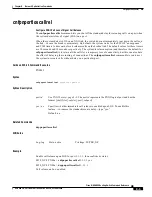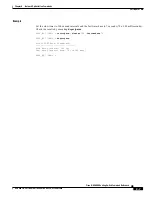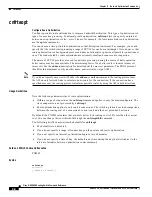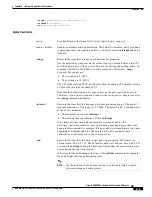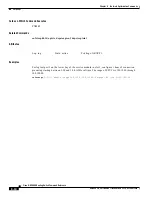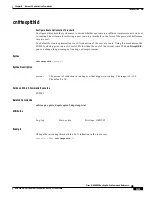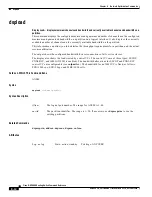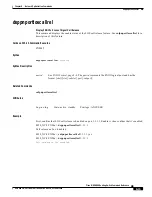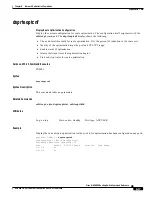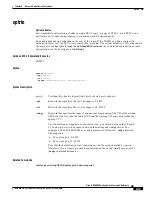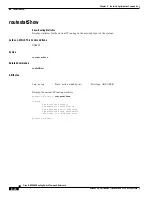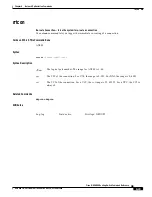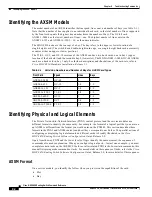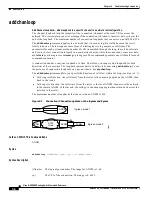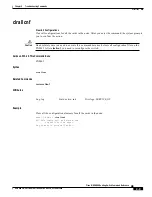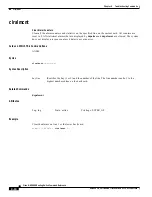
8-19
Cisco MGX 8850 Routing Switch Command Reference
Release 2.0, Part Number 78-10467-04 Rev C0, October 2001
Chapter 8
Network Optimization Commands
optrte
optrte
Optimize Routes
Force immediate optimization of either a single SPVC route, a range of SPVCs, or all SPVCs on a
particular port. (Connection grooming is a common word for optimization.)
Re-routing depends on a reduction in the cost of the route. If the PXM45 can find a route with
sufficiently lower cost, the SPVC is de-routed then re-routed. The system default is a 30% reduction in
the cost but is configurable through the cnfrteoptthld command. For a detailed explanation of route
optimization, see the description of cnfrteopt.
Cards on Which Command Executes
PXM45
Syntax
optrte <portid>
[-vpi <vpi>]
[-vci <vci>]
[-range <starting-vpi/vci..ending-vpi/vci>]
Syntax Description
Related Commands
cnfrteopt, cnfrteoptthld, dsprteoptcnf, dsprteoptstat
portid
Port identifier has the format [shelf.]slot[:subslot].port[:subport].
-vpi
Keyword that specifies the vpi. The range is 0–4095.
-vci
Keyword that specifies the vci. The range is 32–65535.
-range
Keyword that specifies the range of connections for grooming. The VPI of the starting
SPVC must be less than the ending VPI, and the starting VCI must be less than the
ending VCI.
Use the notation as it appears on the syntax line: type a slash between the VPI and
VCI and two dots with no spaces between the starting and ending values. For
example, 100/1000..200/10000 is a valid parameter to follow the –range keyword.
The ranges are:
•
The vpi range is 0–4095.
•
The vci range is 32–65535.
Note that the default range is all connections—on the entity specified by portid.
Therefore, if you want to groom all connections on the portid, simply leave out the
-range command delineator.

